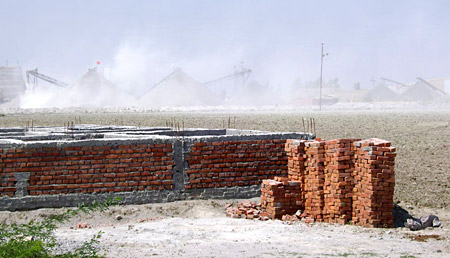In the vast country of India, one finds no dearth of cities and towns that have grown by leaps and bounds over the years. The state of Uttar Pradesh too follows the same trend and tradition. Kabrai is quite significant amongst them. Kabrai is a town that is situated in the district of Mahoba of the same state of India. A `nagar panchayat` has been formed in order to look after the administration of the town as a whole.
The geographic location of the Kabrai is quite significant. Kabrai has been situated at 25.42° N 80.02° E. It has an average height of 157 metres or 515 feet.
It is not possible to know about any town without the knowledge of the demography of the particular place. Thus it becomes inevitable that the eminent demographers too have carried on numerous researches and surveys and also throw some light about the demography of the Kabrai town. The Census report of India that has been brought in the year 2001 too is significant in this regard. Data like population status, literacy rate etc can be inferred from it. According to the report, the total population of the Kabrai town has been enumerated to be 21,255.Out of the total population, males comprise of 54 percent and rate of female population constitutes of 46 percent. In Kabrai town, 19 percent of the total population is below six years of age.
 As far as the population of literacy rate is concerned, Kabrai has an average literacy rate of 48 percent, which is lower than that of the entire nation. The average literacy rate of the nation is 59 .5 percent. To be specific, rate of male literacy is 59 percent , and rate of female literacy is 34 percent .
As far as the population of literacy rate is concerned, Kabrai has an average literacy rate of 48 percent, which is lower than that of the entire nation. The average literacy rate of the nation is 59 .5 percent. To be specific, rate of male literacy is 59 percent , and rate of female literacy is 34 percent .
More information about the Kabrai town is also known. In order to sustain their living, majority of the people of Kabrai carry on business of stones. There are near about hundred `stone crussers`. Hindustan Construction Company has formed a new crusser plant in the Kabrai town.
In the Mahoba district there are several places of interest, which are largely thronged by tourists from several places. Shiv Tandav, Jain Tirthkar, Khakraha math, Urmil Dam, Chandika Devi Temple, Sun Temple, Sri Nagr, Beatal Forming, Alha and Udal Chowk, Gokhar Parvat, Charkhari Estate , Belatal etc deserve to be worth mentioning. It is evident that people from Kabrai town also make a visit to these places.



















